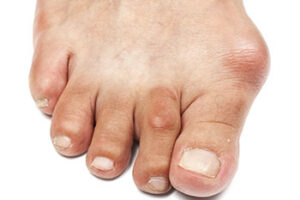Bunions are bony protrusions that develop at the base of the big toe, causing it to angle towards other toes. Characterized by a painful bump, bunions result from genetic factors, improper footwear, or foot structure issues. The most noticeable symptom is a bony bump at the base of the big toe. This bump may be red, swollen, and painful.Management involves conservative measures or, in severe cases, bunion surgery intervention for relief.
Bunion removal involves surgical correction of a foot deformity, hallux valgus. Characterized by a bony bump at the base of the big toe, bunions can cause pain and discomfort. Surgical procedures aim to realign the toe joint, alleviate symptoms, and improve overall foot function. Consultation with a healthcare professional is essential.
Bunions can result from various factors, including:
- Genetics: A family history of bunions may increase the likelihood of developing them.
- Footwear: Tight, narrow, or high-heeled shoes can contribute to the development of bunions.
- Foot Structure: Abnormal foot structure or mechanics may increase the risk of bunions.
- Arthritis: Certain types of arthritis can contribute to the development of bunions.
Treatment for bunions depends on the severity of the condition. Conservative measures include wearing comfortable shoes, using orthotic inserts, applying ice, and taking over-the-counter pain relievers. In more severe cases or when conservative measures fail to provide relief, surgical intervention may be considered to realign the toe joint and remove the bony bump.
Bunion surgical removal, bunion ectomy, is a medical procedure to correct a bony bump at the base of the big toe (hallux valgus). This surgery aims to realign the toe joint, alleviate pain, and improve foot function. Various techniques exist, ranging from bone realignment to joint fusion.
Bunions are a structural deformity, and non-surgical approaches focus on symptom management rather than eliminating the bunion.
While there are conservative measures that help manage the symptoms of bunions and potentially slow their progression, complete removal of a bunion without surgery is typically not possible.
Conservative treatments may include:
- Footwear: Wearing comfortable shoes with a wide toe box can help reduce pressure on the bunion.
- Orthotics: Custom or over-the-counter shoe inserts (orthotics) may help redistribute pressure on the foot.
- Padding and Splinting: Bunion pads or splints may provide relief by cushioning the affected area or attempting to realign the toe.
- Icing: Applying ice to the bunion may help reduce inflammation and alleviate pain.
- Medications: Over-the-counter pain relievers, such as ibuprofen or acetaminophen, may help manage pain and inflammation.
These measures help alleviate symptoms and slow down the progression of the bunion, but they will not eliminate the underlying deformity. In cases where conservative treatments are not effective, and the bunion causes significant pain or functional impairment, surgery may be recommended.If you suspect you have a bunion or are experiencing foot pain, it is critical to consult with a foot doctor in Houston at the DeNiel Foot and Ankle Center for an accurate diagnosis and appropriate management plan tailored to your specific needs.





Comments